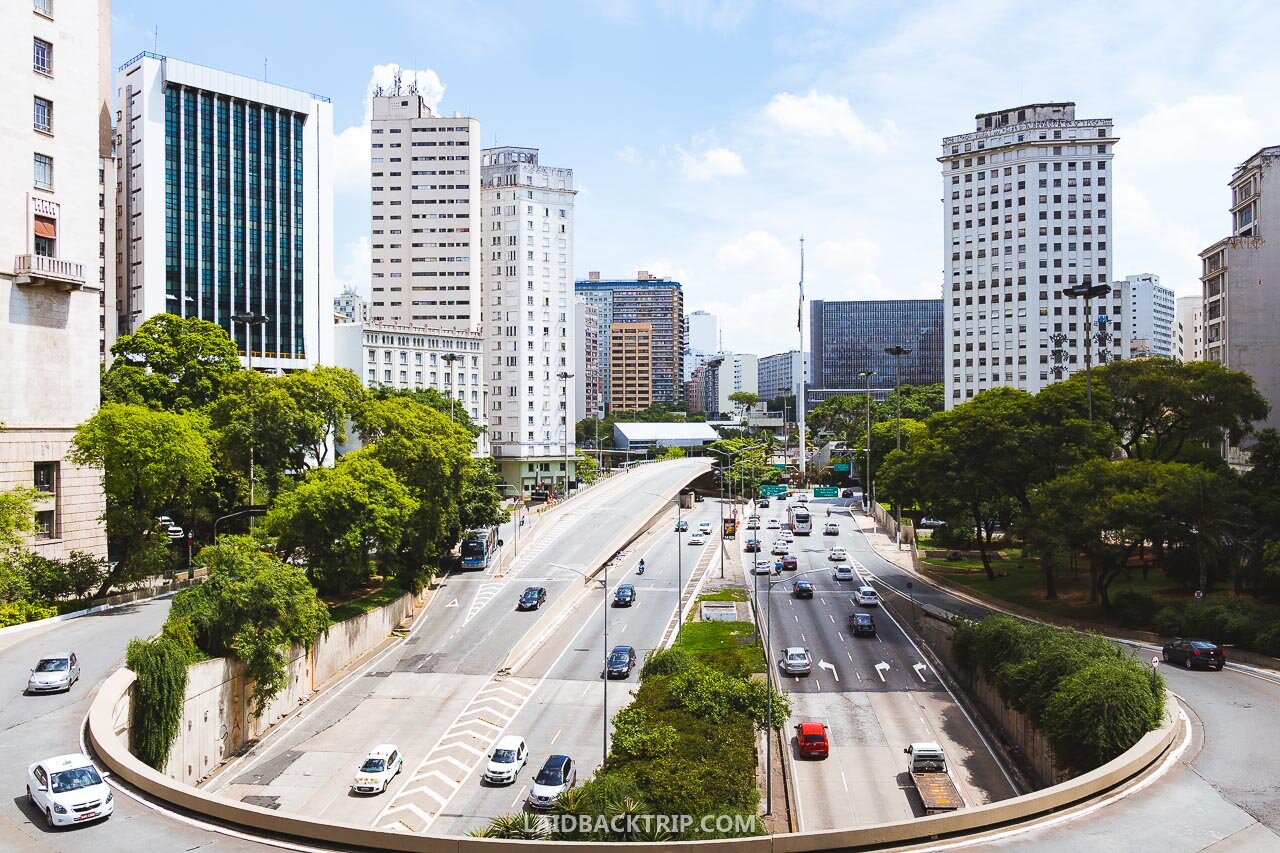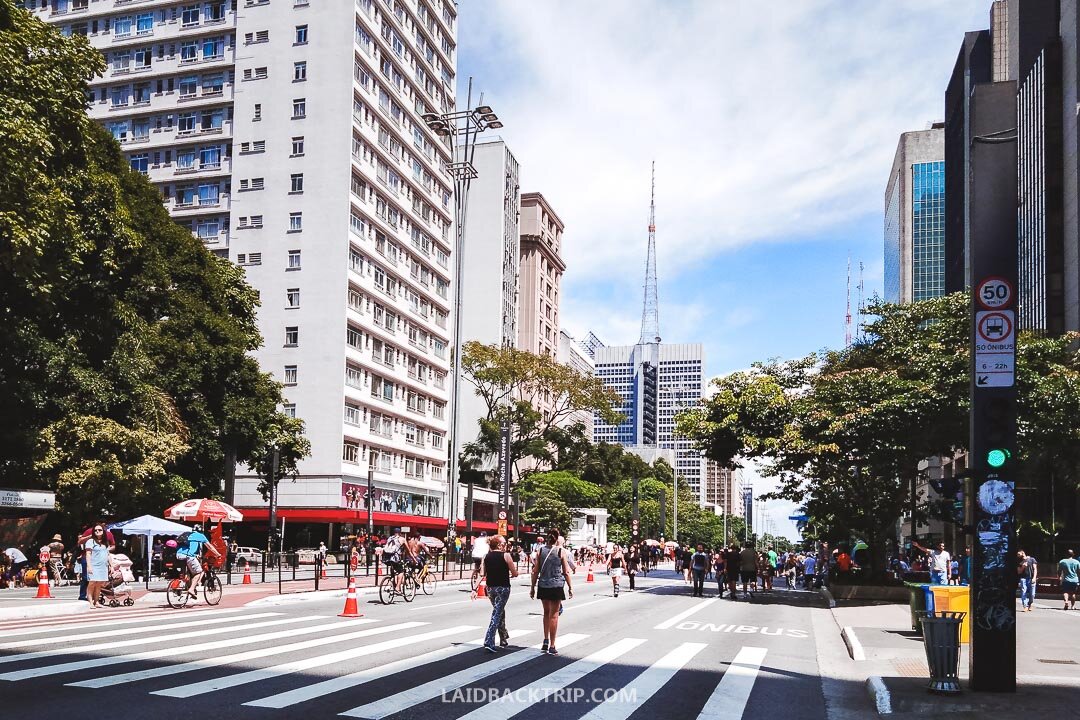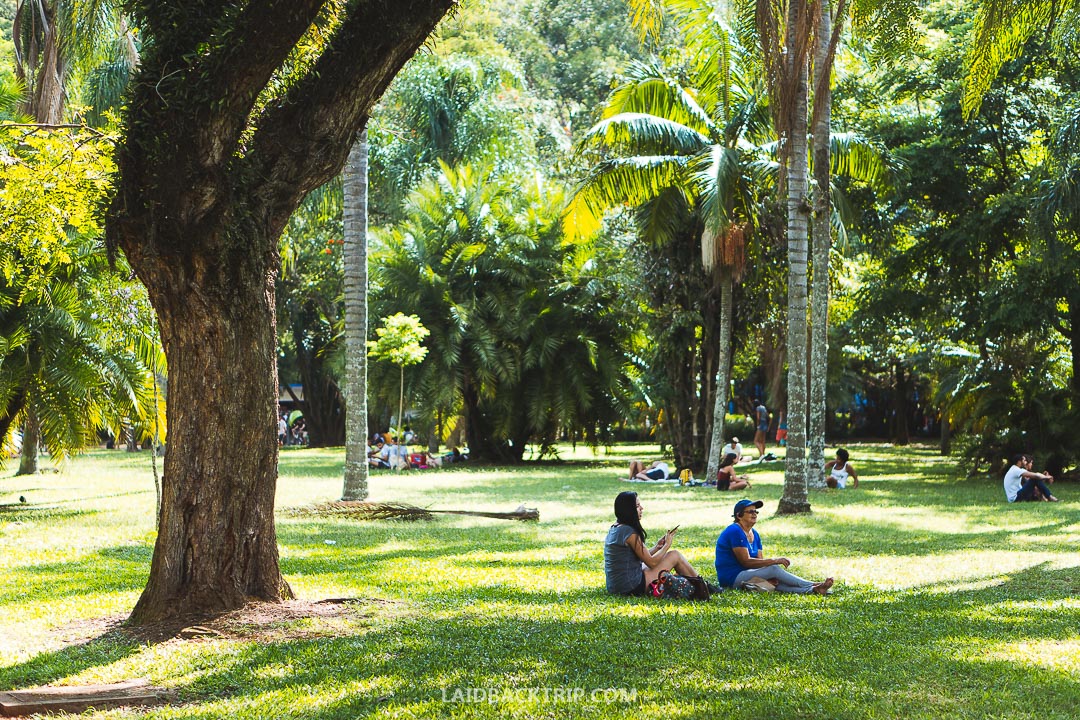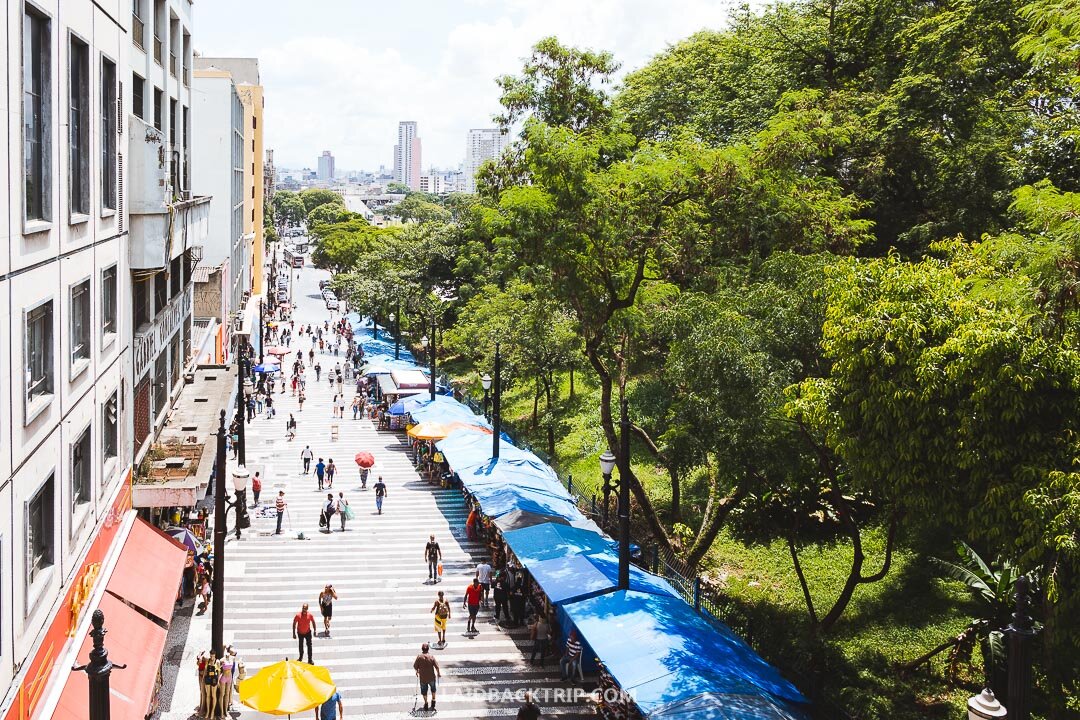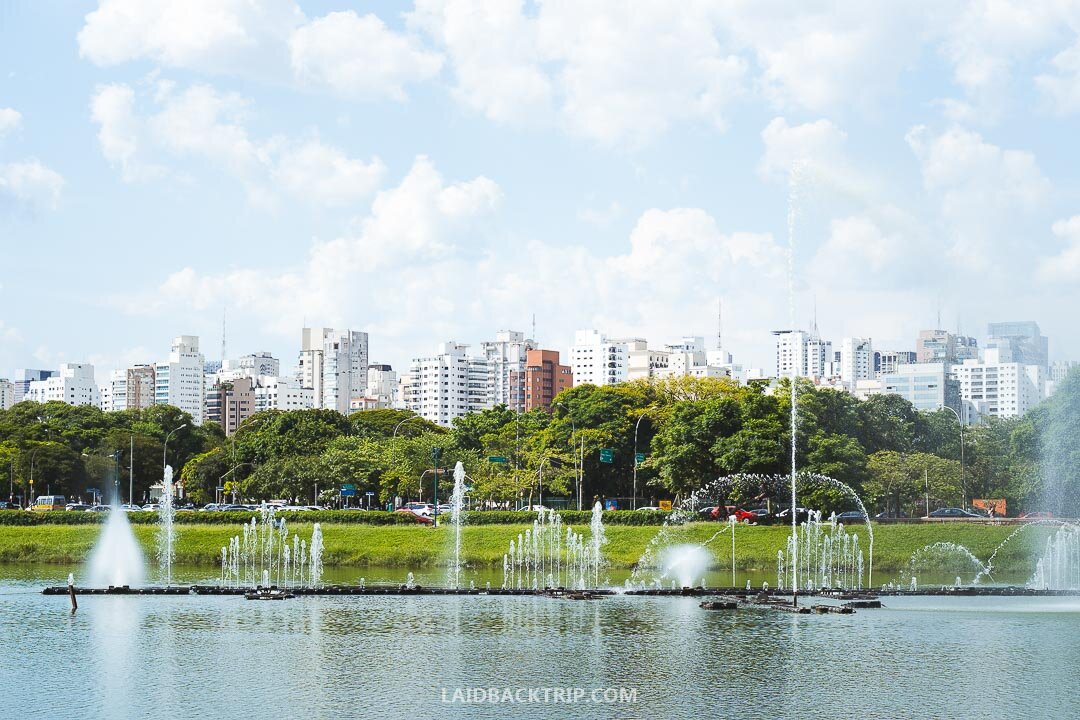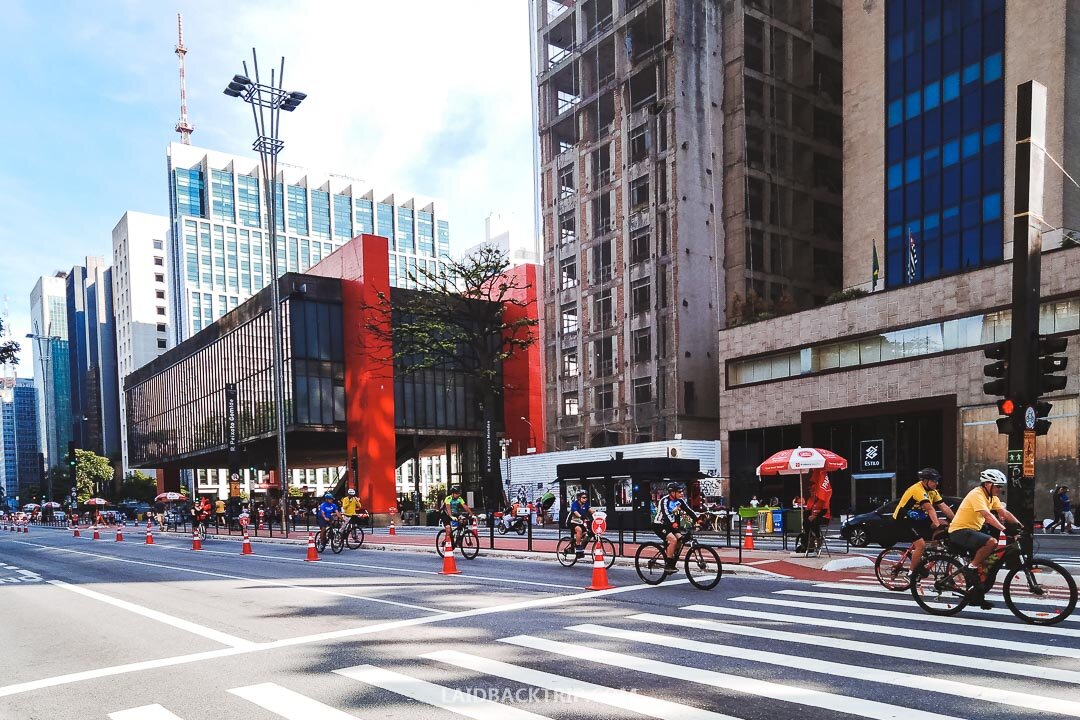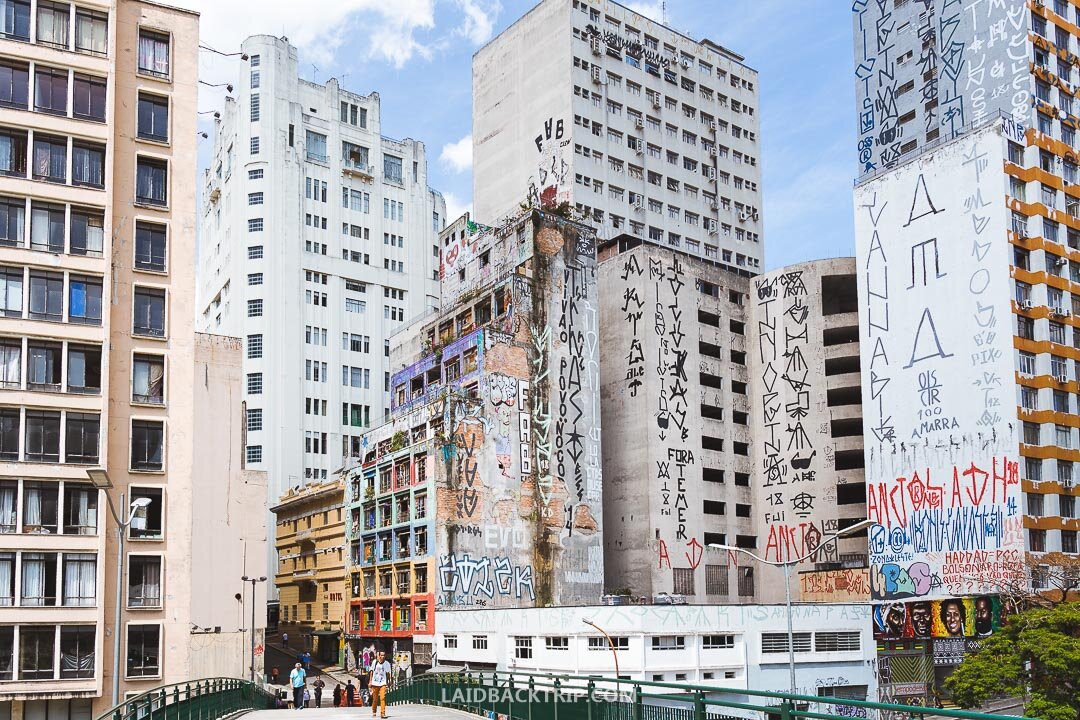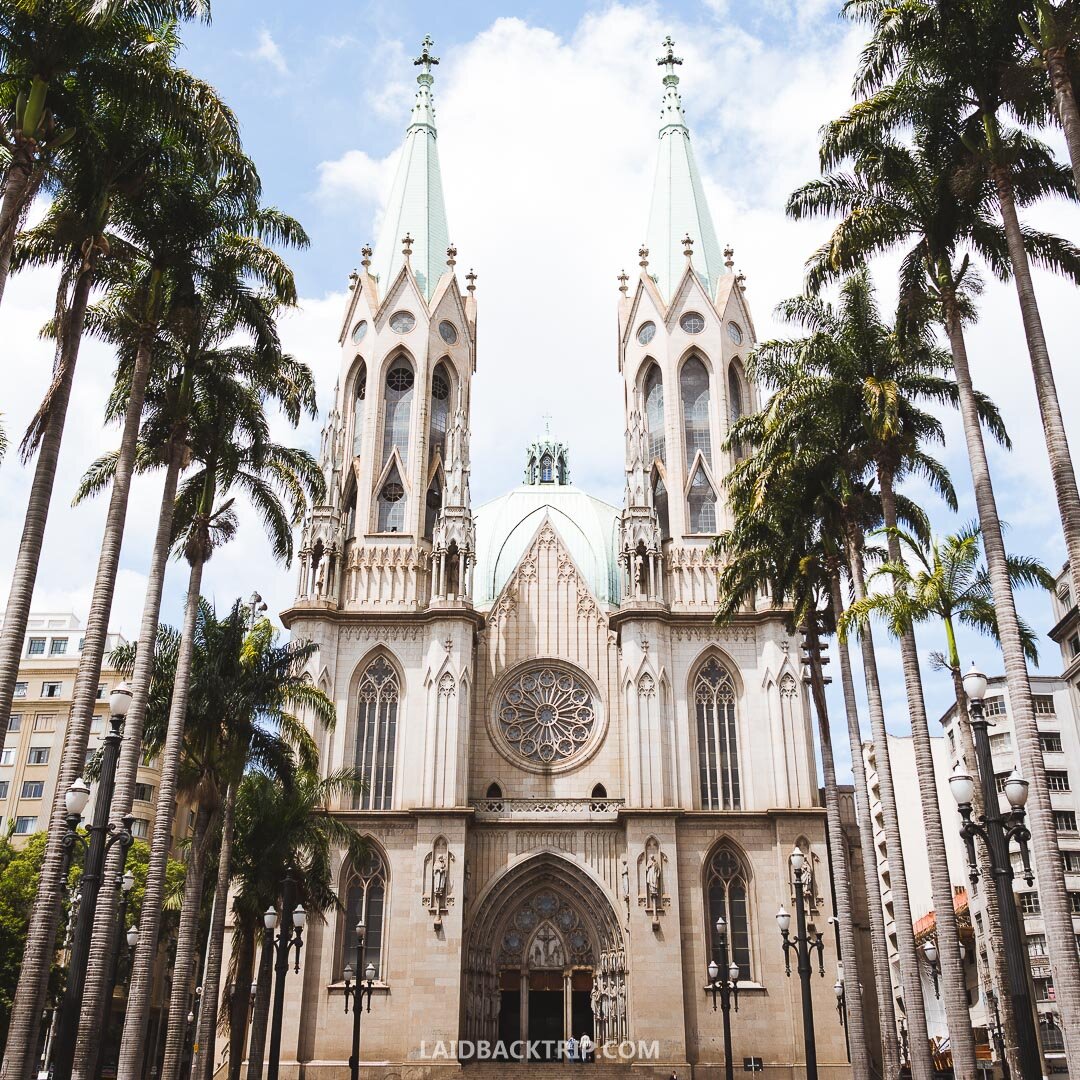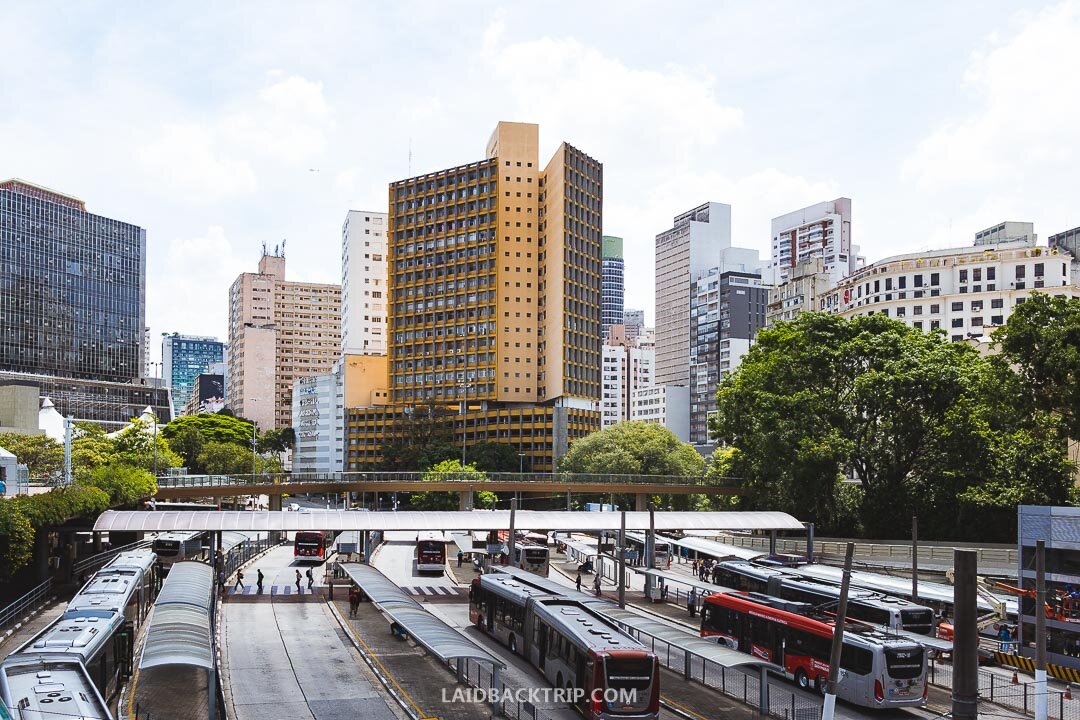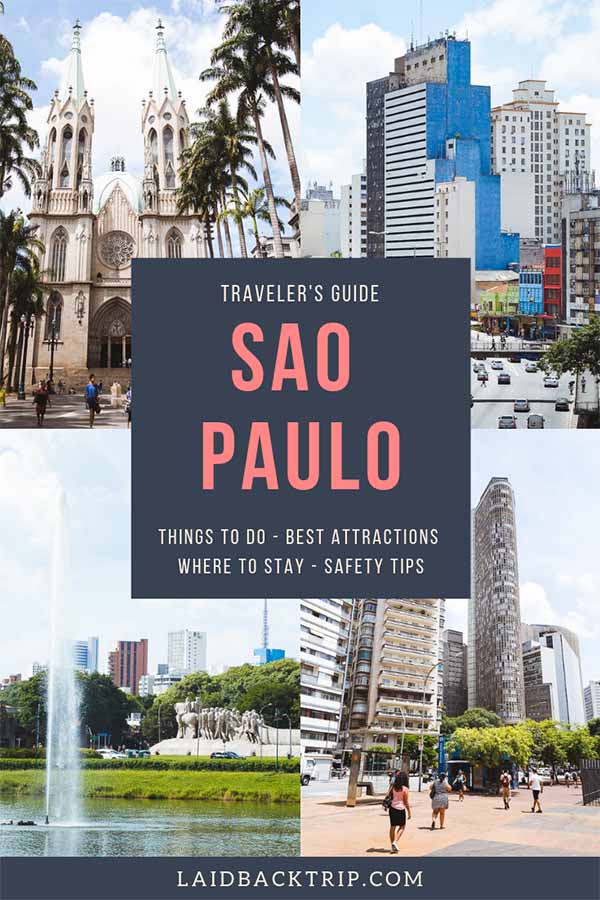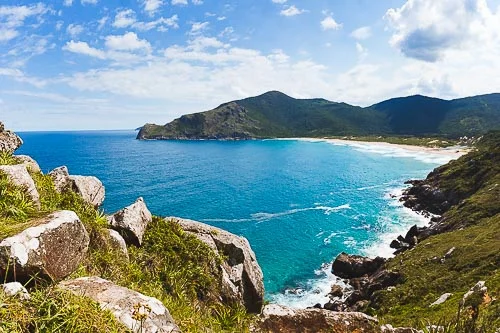Sao Paulo Guide: Visit the Largest City in Brazil
Check out our Sao Paulo guide before traveling to Brazil's megapolis. Find out more about things to do, tips on where to stay, what to expect, what to see, how to get around, plus things you should know before visiting Sao Paulo.
Sao Paulo is Brazil's pulsing and vibrant city to say at least. It is the most populous city in Brazil and South America and one of the largest cities in the world. The importance of Sao Paulo for Brazil's economy is undeniable as it is a financial hub and the center of growth pushing restlessly the rest of the country forward.
For us, visiting such a big city felt a bit intimidating, considering the fact that more people live there than in our home country, the Czech Republic.
But although Sao Paulo is enormous and it is sprawling quickly, exploring the city and getting around was actually not hard at all.
Many travelers write off Sao Paulo from their list as it doesn't abound with the obvious beauty.
It is not set in a such beautiful landscape like Rio de Janeiro, and thousands of skyscrapers had already overgrown the old colonial buildings.
We decided to spend two full days in Sao Paulo, and although everything in the city was not all rainbows and unicorns, we found quite a lot of things to do in this South American commercial center.
THE VIBE OF SAO PAULO
You will notice at the very first sight, or you will maybe even feel it as soon as you arrive on the bus terminal or land at the airport that Sao Paulo is not a typical South American city.
The energy is different, more open, freer.
The megapolis is cosmopolitan in the proper sense of the world: there is a lot of international inhabitants who found their temporary or lifelong home here, and who add on their own cultures and habits to an already mixed culture of Sao Paulo.
Also, the positive attitude and openness to the LGBT community make a difference, and you can see a large number of same-sex couples walking freely around, holding hands and simply not hiding their love.
SAFETY IN SAO PAULO
Sao Paulo doesn't have the best reputation when it comes to safety, but when walking around, you will soon find out it is not different from any other big city.
Yes, it has its issues, but if you will be visiting only the city center or the parks and you won't wander to favelas in the suburbs, you should not experience any troubles.
Of course, petty crime is a thing here as anywhere else, so watch your belongings closely and do not walk in the neighborhoods after dark.
We have written useful post about how to stay safe when traveling in South America, and we recommend you to read it before you go.
Sao Paulo is for sure a city which is rough around edges, but what took us by surprise the most was the number of homeless people on the streets, something we are not used to seeing that often back home.
In Sao Paulo, we saw a staggering number of people without a home, people who are sleeping, standing and sitting everywhere they can, and the city, well, smells a bit.
When walking during the day or on well-lit busy streets you should not suffer any harm, but do not involve in any argument or discussion with them.
Travel Insurance
We never leave home without travel insurance that was designed to cover our expenses if something goes wrong during the trip.
Travel insurance protects against theft, flight delays, injury, illness, cancellations, and much more.
World Nomads provides travel insurance for travelers to cover their trip essentials, including sports and adventure activities.
SafetyWing is affordable travel insurance for backpackers, long-term travelers, and digital nomads.
Travel smarter and safer!
DRINK CAIPIRINHA
Caipirinha is a traditional Brazilian alcoholic drink, so where else you should taste it than in Sao Paulo, the country's party capital.
The national cocktail is made from cachaca (sugarcane hard liquor), sugar, lime and, of course, ice.
In Brazil, you can find several distilleries throughout the country where you can see the full process of making cachaca - one of the most famous regions is the area around colonial town of Paraty.
IBIRAPUERA PARK
Ibirapuera Park is one of the few retreats into nature that inhabitants of Sao Paulo can use when seeking for a rest, a place to meet friends or a place where to do some sport or gain knowledge.
We visited the park later in the afternoon on Sunday, and it was full of people doing exercise, sitting on the grass, having a picnic and overall having fun.
Although Ibirapuera Park is close to the city and you can see the skyscraper landscape of Sao Paulo from its every corner, yet it feels far away from hustle and bustle of the busy city life.
But the park is not devoted only to fun as it is home to many museums and it is easy to spend here all day - and it is probably what many people of Sao Paulo learned to do because Ibirapuera Park was in 2017 the most visited park of South America.
The park is easily accessible by rental car, bus or metro.
VISIT MUNICIPAL MARKET
Visit of Municipal Market is a must when in Sao Paulo, but our visit to this attraction left us a little bit disappointed. The industrial hall is large, but it has nothing in common with any traditional market at all, as nowadays it is only a theater for tourists (not only for foreigner tourists but for local visitors as well).
You can find here many stalls with exotic or not-so-much exotic fruits, but prices are not only overpriced but rather ridiculous, and we think that no one with common sense should ever support practices like this.
You can find here also several bakeries and restaurants which are also more expensive, but prices are not that terrible.
If you want to taste at least one traditional food, you shouldn't miss Mortadella sandwich here at Municipal Market: it is famous not only for its taste but also for its size.
It is pretty challenging to eat the sandwich only by yourself without any help.
AVENIDA PAULISTA
Avenida Paulista is the artery of Sao Paulo.
The wide and long boulevard is a center of the city's economic power lined with many skyscrapers where headquarters of numerous national important companies sit.
During the week, the traffic on Avenida Paulista is pretty heavy, but on weekends the car and public transport reduce, and it feels pleasant to walk around.
It is not necessary to walk the full length of Avenida Paulista, as the views become repetitive after a while, so we think that the one kilometer long stretch in any direction from the Museum of Art is good enough to get the taste of this place.
SKYSCRAPERS
Sao Paulo is a city of skyscrapers allegedly there are more than 2500 of them and over one hundred buildings are higher than 100 meters.
That's being said we felt pretty small when walking the streets of Sao Paulo.
It is not that easy to photograph the cityscape of Sao Paulo as it was in Panama City or later in New York, but when wandering around, one or two photogenic opportunities will come up.
There is also an option to get on top of one of those high buildings for a panoramic view from the top.
One of the most famous skyscrapers is Edificio Martinelli where you can take a free tour every half an hour to admire Sao Paulo from above.
CATHEDRAL METROPOLITANA DE SAO PAULO
Praca de Se alias the Square of the Sea is a traditional point for tourists to start exploring Sao Paulo, but it is also home to the city's most important religious structure, Catedral Metropolitana.
The huge cathedral can hold up to 8000 people and is fairly new.
The construction started in 1912 because the old and original gothic cathedral (320 years old) was demolished to give way to a new and modern masterpiece which pays tribute to religious faith.
OSCAR NIEMEYER ARCHITECTURE
Oscar Niemeyer is Brazil's most famous architect of the 20th century, so it is impossible to think that he wouldn't have left any footprints of his ingenious work in the country's biggest city, Sao Paulo.
His work is quite easily recognizable as he wasn't attracted by straight lines and strict angles but by curves and curvy lines.
Three buildings he designed changed the skyline of Sao Paulo in particular - Montreal Building, Copan and Galeria California.
If you'll have time, his work is definitely worth checking out.
And in case you are interested in architecture, we recommend you to visit the capital city of Brazil, Brasilia, which is one of the well-planned cities in the world and where you can see a number of beautiful buildings, Oscar Niemeyer designed.
READ MORE:
Brazil: The Perfect 2-Week Itinerary
Florianopolis Guide: Exploring Magical Island In Brazil
35 Fun Activities and Things To Do In Paraty, Brazil
Inhotim: Is This the Best Outdoor Museum in the World?
A Complete Guide To Visiting Iguazu Falls
Ouro Preto: Things to Do in Brazil's Most Beautiful Colonial City
MUSEUM OF ART
Museu de Arte de Sao Paulo alias MASP is Sao Paulo's best-known museum of modern and contemporary art situated on Avenida Paulista.
It holds the finest collections from all around the world spread out on four floors while some exhibitions are temporary and some permanent. You will find here many paintings which will keep you busy for at least three hours it depends on how carefully you will read all the texts.
The entrance fee cost R 40.
GRAFFITI IN SAO PAULO
It became a norm that every bigger South American city has a laidback area where graffiti takes over. Our favorite city with outstanding graffiti culture was so far Bogota, the capital of Colombia, but Sao Paulo doesn't stay behind.
You can find better or worse attempts of graffiti all around the city.
But the most famous place where you can see many colorful pictures in one place is so called Batman Alley, a long street in Vila Magdalena is lined with high walls sprayed with impressive murals.
The street art is literally alive here.
DRINK COCONUT WATER
Coconut water is healthy, tasty, refreshing and also cheap in Sao Paulo, and you can buy it on every corner - in parks, on busy streets or in shops without any additional substances.
We purchased fresh coconut water in Ibirapuera Park, where all sellers have one standardized price, but we also bought the whole coconut in the shop and opened it later in our room.
When you want to do the same, do not forget you need to have a sharp knife otherwise, you will struggle opening it.
SAO PAULO DOWNTOWN
The downtown of Sao Paulo is easily walkable on foot.
From Metropolitan Cathedral walk through small streets where some of the colonial houses have left, wander to the market, cross the bridge, get into the financial district with many notable skyscrapers and banks or admire the historical building of Sao Paulo's theatre.
Sao Paulo is for sure not a city blessed with many beautiful architectural gems, but keep your eyes open to find those few!
THINGS TO KNOW BEFORE VISITING SAO PAULO
Before visiting Sao Paulo, there are several useful things you should know before arriving in the fast-paced megapolis.
1. Portuguese | Do not forget that Brazil is a Portuguese speaking country and if you think your Spanish will help you here, it in most of the cases won't as it is not that similar as we had thought.
It is useful to learn at least some phrases as Paulistas (citizens of Sao Paulo) in most cases do not speak English, and it is also better not to reveal your foreigner status that soon.
2. Sao Paulo parties until morning | We arrived in Sao Paulo on Sunday early in the morning, and when looking for our hostel for next two nights, we were quite surprised how many people we met outside bars at 7 AM.
Sao Paulo is one of those cities who never sleep, so if you know how to party hard, this might be your place.
3. Pao de Queijo is the thing here | Our new addiction is called Pao de Queijo (cheesy warm balls), and you can taste it basically everywhere in Sao Paulo.
It is a lifesaver when you wander the streets of Sao Paulo and cannot find anything to eat.
4. Sao Paulo is not a beach city | Brazil has many lovely beach cities, but Sao Paulo is not one of them.
When looking on a map it might seem that the coast is nearby, and even citizens of Sao Paulo sometimes say they have a beach as one hour by car doesn't seem that far for them.
But trust us, it is much better to visit for example Florianopolis, where we have found one of the prettiest beaches we've ever seen.
5. Don't drink tap water | There's an easy rule - when locals do not drink the tap water, you should by no means drink it either.
WHERE TO STAY IN SAO PAULO
Given the fact that there are so many hotels in Sao Paulo, we expected hotels to be cheaper because of the enormous competition.
But the opposite is the truth as the city hosts many business travelers and lots of conferences take place here, so it means that Sao Paulo is rather an expensive destination.
We handpicked the best hotels in every price range to make your choice easier.
Budget | Balcony Hostel Hotel - Perfectly situated hostel close to Luz Metro Station offers dormitory beds as well as private rooms and is the best choice for all budget travelers.
Mid-range | Hotel Boulevard Inn Sao Paulo - Spacious rooms, excellent breakfast, good price and location in the city center makes from this hotel a perfect place to stay when exploring Sao Paulo.
Luxury | Tivoli Moffarej Sao Paulo - Stylish hotel with splendid views over Sao Paulo offers to its guests' five-star comfort including spa, swimming pool, gym, two restaurants, and bar.
Alternatively, search for your accommodation via Hostelworld.
HOW TO GET AROUND SAO PAULO
Sao Paulo has an efficient public transport network, and although we thought that our host was exaggerating a bit when telling us that Sao Paulo is the only city in South America where everything works as in Europe, we must admit that public transport was reliable and easy to use.
You can use buses which run frequently or metro, allegedly the safest place you can be in Sao Paulo.
The metro is for example connected with the main bus terminal.
You don't need a prepaid card to use public transport (although you can buy one an charge it according to your traveling needs), one ride costs R 4.40.
HOW TO GET TO SAO PAULO
Given the size and importance of Sao Paulo, there is, of course, a well-connected international airport.
When traveling by bus, there is probably not a destination within Brazil you couldn't reach from Sao Paulo's Tiete Bus Terminal, which is, by the way, the largest bus terminal in Latin America and the second largest in the world.
We arrived in Sao Paulo from Florianopolis, where we explored unspoiled beaches and carried on to Paraty, a beautiful colonial gem on the coast close to Rio de Janeiro.
You can also take a bus from Sao Paulo to Foz do Iguacu, home to impressive Iguazu Falls.
WHAT TO PACK FOR SAO PAULO
Comfortable Shoes for Him & for Her | When you're planning to walk around the city all day, wear a comfy shoes to prevent sore feet.
Backpack for Him & for Her | Take a comfortable backpack to fit there snack, water, extra layers of clothes and umbrella.
Umbrella | In case it rains, bring along an umbrella.
Sunscreen | We used SPF 50+ every day in Brazil.
Camera | We never leave our hotel room without a compact camera.
You can also check out our South America packing list, if you're planning on traveling around this beautiful continent.
Travel Resources
Here you can find links to all the travel resources we use and which you might find helpful when planning your next holiday.
Accommodation: When looking for accommodation, we usually search hotels via Booking.com or Hostelworld.
Tours: Although we love to travel independently, some places are better to visit with a guided tour.
We prefer GetYourGuide for its easy-to-use interface and solid reputation. Another great alternative is Viator.
Rental Cars: When going on a road trip, we always use Rentalcars.com, a reliable site for booking a rental car in advance.
Flight Tickets: When looking for flight tickets, you can search Skyscanner to find the best price.
Travel Insurance: World Nomads and SafetyWing cover against risks of travel.
